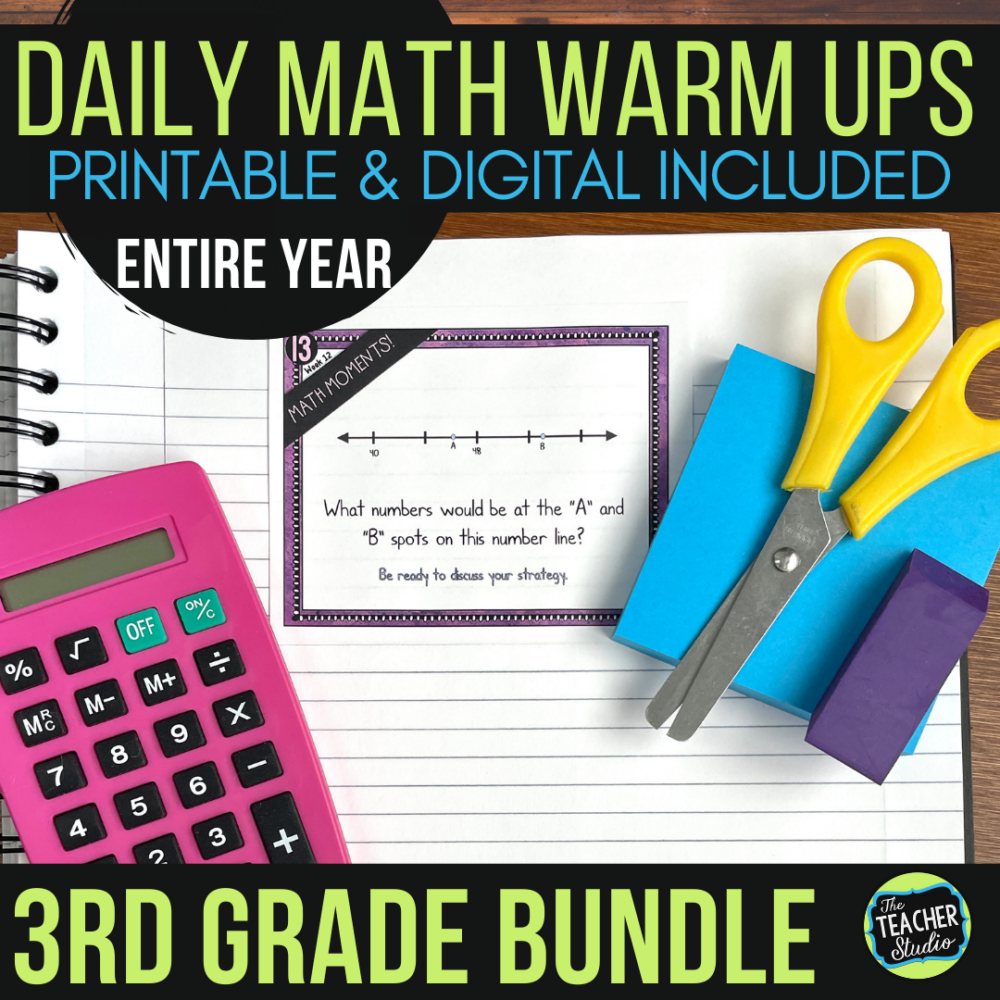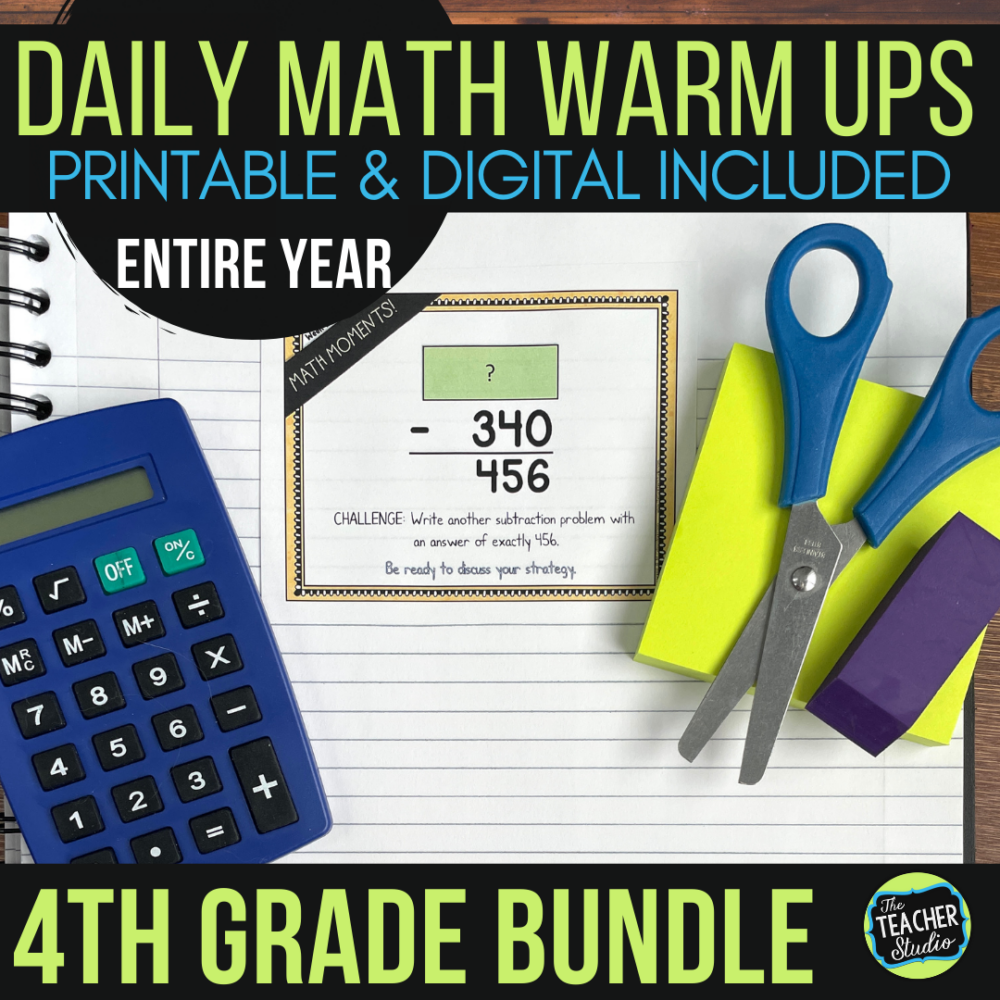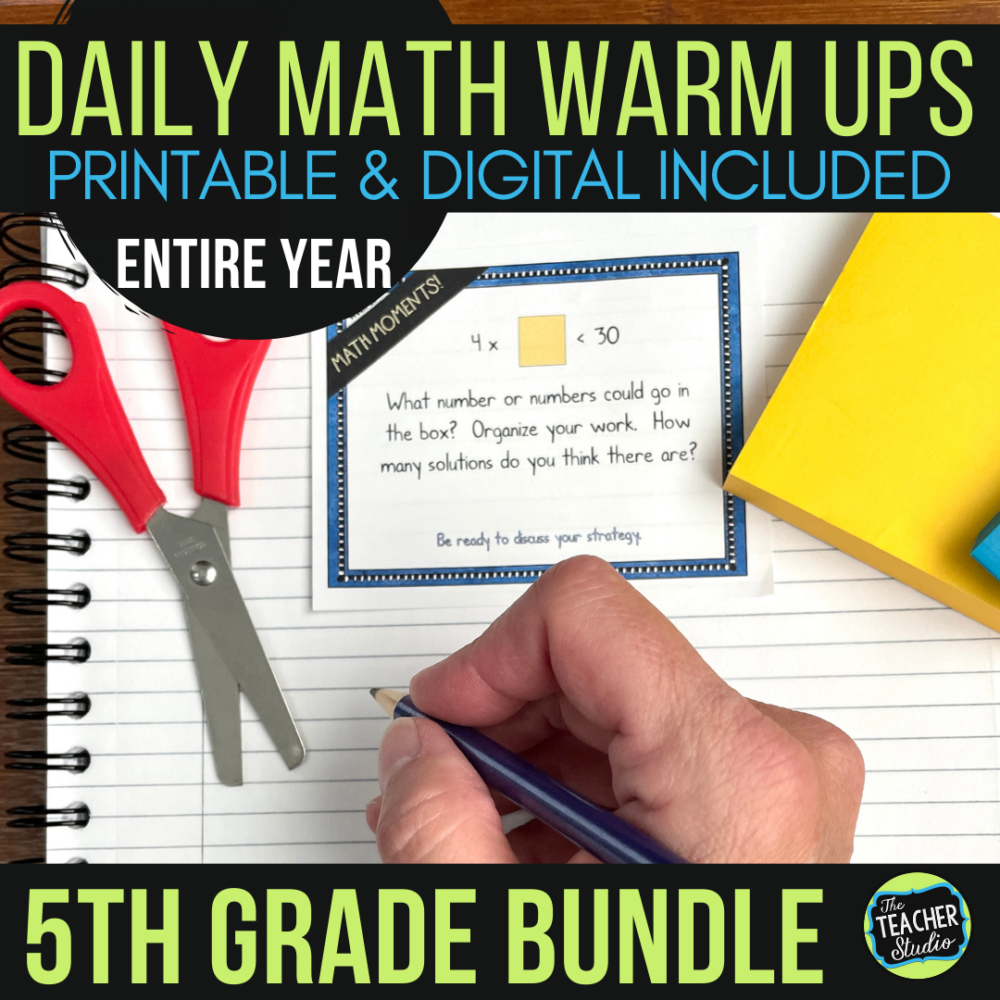One question I get often is “How do you organize your math block?” It’s a tricky question because I am a person who likes to shake things up and do things differently all the time.
If you come to my class on Tuesday, it will definitely look very different than it did on Monday. I love that–and my students do too. They never know what to expect in terms of how lessons will be delivered–and it keeps everyone on their toes. Of course, certain things are set in stone–and expectations are crystal clear. Work quality, math talk, behavior–all are extremely clear to students.
Another thing that DOES remain constant is starting off each day with a powerful, daily math warm-up.
What varies is how I approach that powerful math warm-up! Check out some ideas before on how I keep things fresh and keep my students engaged in this worthwhile math task. Remember, the first chunk of math class is valuable real estate! Don’t waste your students’ best thinking time with mundane tasks, correcting homework, or procedures. Get them thinking right away!
We know that elementary students have a limited attention span; let’s use that information to switch activities several times during a math class–and starting with a great warm-up is a good way to get the ball rolling!
Remember, these warm-ups are meant to last 5-10 minutes, so the process is quick–but powerful.
Daily Math Warm-Ups: Project and discuss
One way to incorporate math warm-ups with VERY little prep time is to pull up the slide and project one. In fact, some weeks I go in, make a copy of each slide I want to use, and paste it into my weekly slide show. That way I get all 5 warm-ups ready at once and there is no thinking or materials.
This is a great way to dig into math talk right away. What I typically do is present the problem for a minute or two where I allow NO talking. I want the students to have “think time”. Then, I may read the problem aloud and give a little more think time.
After that, I invite the students to partner up, use notebooks or white boards if the problem requires it, do some work together, and then be ready to share out with the group.
I love having these large group discussions–but after they have had time to dig in. Depending on the warm-up problem type, I might ask questions like:
- What was challenging?
- How did you get started?
- Did you make any mistakes? How did you fix them?
- Does this problem have one answer or more than one? How do you know?
- What math skills did you need to be successful?
- Did you and your partner have similar or different strategies?
Or send them digitally!
In addition to projecting these warm-ups, remember that you can always send them to students digitally! They can either work independently or in partners, can either write on the slides or just discuss and solve and prepare to come back as a large group to discuss. By varying your “delivery” method, you keep the ROUTINE, but keep things fresh!
Print them off and put them in a spiral
Another way I use math warm-ups is to physically print them off and have students glue them into their math spirals. This allows students to interact more with the problems, write directly on the task, and then work to solve. This is especially helpful for geometry problems and number lines.
Otherwise, the process is the same! I give them some alone work time. After that, I ask them to share in partners or small groups. Finally, we have a quick class discussion about the problem, the solutions, and the strategies.
Extend the Math
A third way I sometimes build up deeper understanding with these warm-ups is to take a problem from one day, revisit it the next, and have my students try to write similar problems.
This is a great way to have them apply the math in new ways! After they write their new problem, they can work in partners to solve each other’s tasks, and compare answers. We then come back together as a group to talk about how it went! Sometimes we’ll share a few sample problems under the document camera to showcase how some students tackled the challenge.
Modeling Math Organization
As the year unfolds, I continue to stress math talk and math organization with my students. Taking time some days to share student work samples that show different ways to organize work can be so powerful!
At the beginning of the year, we make an anchor chart with suggestions about how to keep our math work organized and neat. Being able to see “real” examples of this being done is super motivating for students and helps them see the target you are reaching for. What makes this so powerful is that many students who might struggle with actual math can work to make gains in this area and can become known for that–super motivating and helps build confidence!
Using Your Daily Math Warm-Ups for Assessment
When a math warm-up or any problem is challenging, coming back to revisit it at a later time can be so powerful. In fact, using problem types that you have previously explored can be a great assessment tool! You can grab a previously used problem or, because I have a number of similar problems, use a novel one.
For example, if you spend some time exploring number lines as warm-ups, it certainly seems reasonable to use one of the number line warm-ups a few weeks later as an assessment to see how that exploration went. It can help guide you as to how much more explicit teaching needs to be done.
The same is true for many of the different problem “types”. Use a few here and there to take the temperature of the class and assess how everyone is doing with some of the different concepts.
I hope some of these tips help you find ways to use math warm-ups in new and powerful ways!
Want to check out the daily math warm-ups I use? I have them for grades 3, 4, and 5! Just click the images below to see more!











